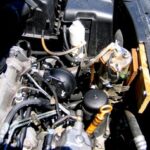Hydrogenation is one of the most basic chemical manipulations. As a synthetic organic chemist, I’ve performed hundreds of hydrogenations. The reaction is pretty simple. The starting material is dissolved in some type of solvent (usually an alcohol), a catalyst is added, and then the container is pressurized with hydrogen gas. After a certain time of stirring / shaking, the container is depressurized and the reaction product is obtained. Hydrogenation adds hydrogen to a molecule which is deficient in hydrogen; we use it on a vast scale to make margarine and Crisco, for example. It’s a time-tested reaction that is reliable and will almost always succeed if the right combination of pressure, catalyst amount, and time of reaction is selected.
The drawback to hydrogenation is that the catalyst required is almost always a precious metal such as palladium or platinum. The metal is ground into fine particles and then embedded in activated carbon (1%-5% metal loading is a common range), and that material is then used for the hydrogenation. Because activated carbon “soaks up” and adheres to many organic compounds, often times the catalyst cannot be reused for hydrogenation without extensive recycling and isolation / treatment of the precious metal particles. As a result, hydrogenation on large scales can sometimes be very costly.
I’m a big fan of hydrogenation reactions, as my first job as a professional chemist was working in a lab that specialized in hydrogenations. I’ve handled just about every hydrogenation catalyst known to man, which is why I was particular interested to read a recent article in Science magazine which promises the effectiveness of regular precious-metal catalysts but at a fraction of the cost. The researchers (a group of researchers from Tufts University) took a tiny block of copper metal and positioned it about 3 inches away from a tiny piece of palladium. They then heated the palladium (under vacuum) to extremely high temperatures, causing the metal to evaporate. Individual atoms of the precious metal gas hit the surface of the copper block, cooling immediately and forming tiny bumps of palladium on the surface. Electron microscopy confirmed that individual atoms of palladium had embedded themselves into the surface of the copper; they didn’t form clusters, but were randomly sprinkled across the surface.
This copper-palladium material was then tested as a catalyst in the hydrogenation of typical organic materials such as styrene, where it performed to high standards. It’s a remarkable achievement in the field of hydrogenation. With the cost of all precious metals rising (not to mention the environmental cost of palladium and platinum mining), anything that reduces the amount of chemical waste produced in a process is worthy of notice. This new research allows chemists like myself to envision large scale chemical processes that utilize hydrogenation but now are much more economical. The scientific report was a solid piece of chemistry, well worthy of reading.
The source of this article can be found at:
Kyriakou, G., et al. “Isolated metal atom geometries as a strategy for selective heterogeneous hydrogenations”. Science, 2012, 335, 6073.






